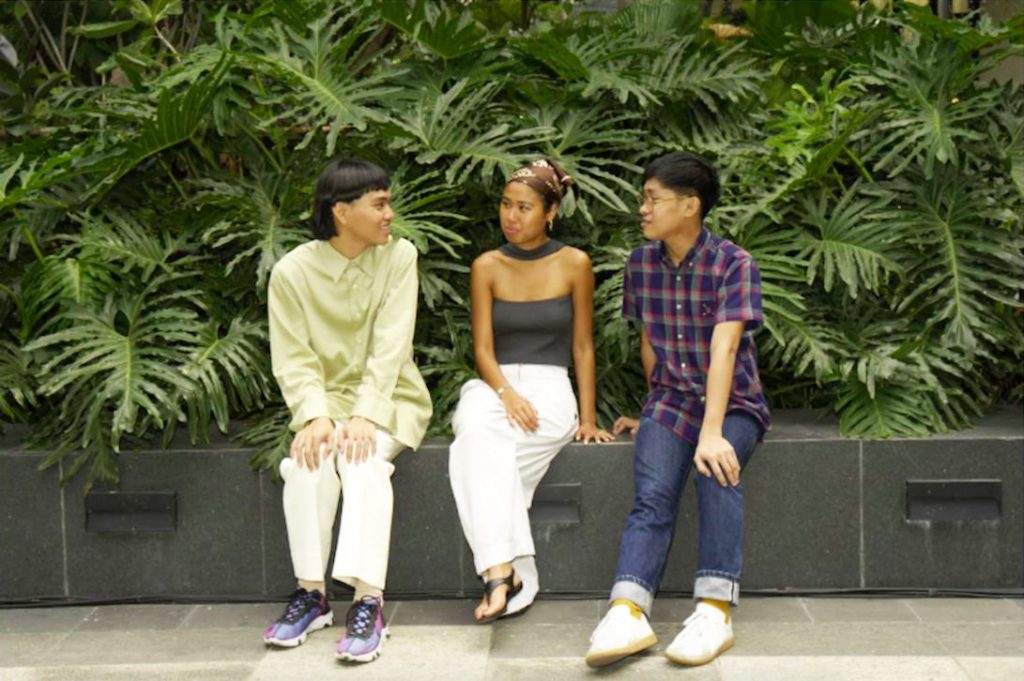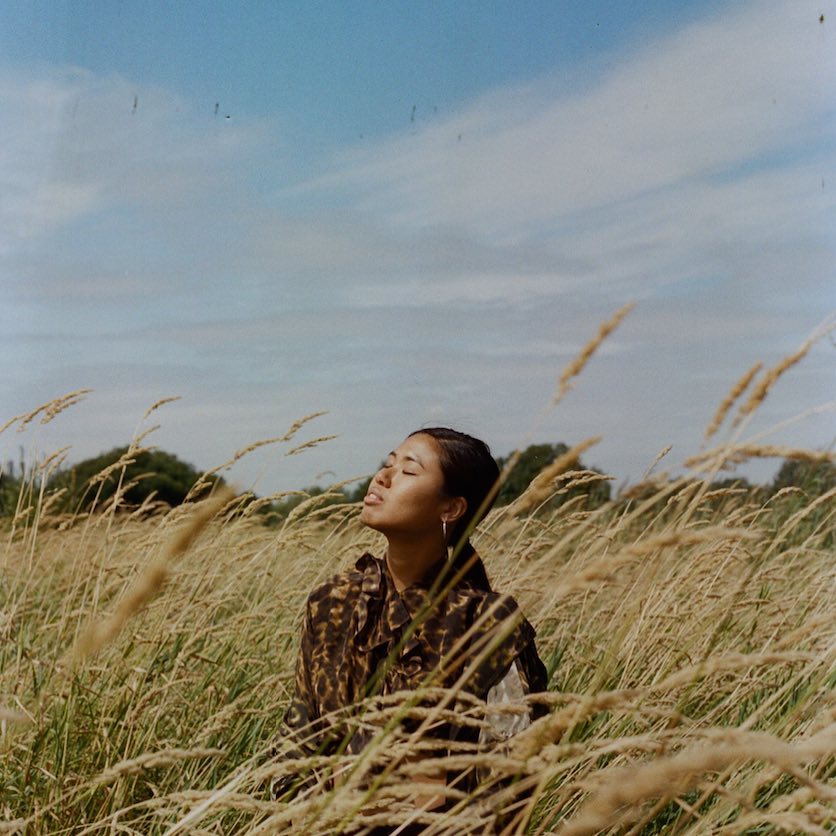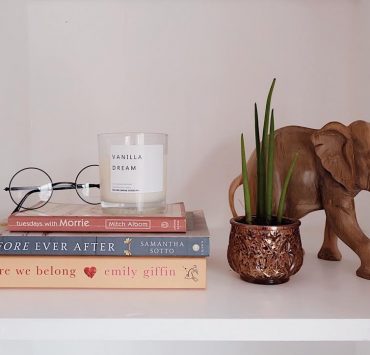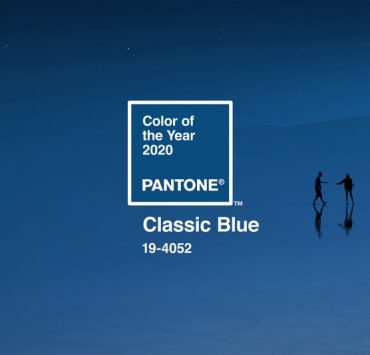If I wanted to interrogate Manila-born, London-based stylist and editor Isabelle Landicho’s practice of sustainability based on clothing labels, then her outfit already answered it. The ensemble is the same look she wore at the climate protest in Westminster where she held a placard saying, “Beyoncé fans against climate change!”
The gray top, which looks like a regular tank top at the back but a “power top” in front, is from the eponymous label of designer Elliss Solomon. She didn’t mention it explicitly, but the way she talks about Elliss suggests that it’s a favorite. The London-based label uses natural fibers like cotton, hemp, and bamboo, and manufactures its clothes in the same building where they are designed. The printed garments, on the other hand, are made in The Netherlands with non-toxic dyes. The offcuts are recycled into mattress fillers in Slovenia. And above all, Elliss provides fair wages and benefits including sick leaves and holidays to its employees.
And her cream cotton trousers? From a global high street retailer. To be frank, it is the answer I least expected.
Landicho, who immigrated to the United Kingdom at eight, is currently the lifestyle and fashion editor of The Earth Issue, a platform that engages artists and creatives in the conversation about environmentalism. Established in 2017 by photographer Elena Cremona, The Earth Issue was primarily situated in the context of art and environmental activism. So when Landicho joined the collective earlier this year, she was intent to open and stretch the discussion about fashion’s sustainability. So why the trousers from a fast fashion brand?
“In an ideal world we would be living in a place where brands are transparent about their supply chains, but we don’t. Instead, companies continue to greenwash and it makes it really hard as a consumer to know which brands to trust and support.”
Before she joined The Earth Issue this year, Landicho was a full-time stylist for the same brand where her trousers came from. “There are rails of new clothes every day, and we’re shooting five days a week,” she recalls. With the amount of clothes she had to work with every week, styles turn obsolete rather quickly. “It was astounding how many clothes they gave away throughout. I was always that one who took it to charity (or thrift) shops.” And the pair of pants she’s wearing is one of those things she kept for herself.
Landicho, whose turning point to a more sustainable lifestyle was a shift to a plant-based diet about four years ago, eventually found the need to leave the brand. “When you have such strong morals, [being in fast fashion every day] is draining so I made that decision to step away,” she says. She had to, as her climate protest IG post reads, put her morals where her mouth is.
https://www.instagram.com/p/B2orgnvgstc/
Looking at the much bigger picture of the fashion industry, it’s difficult to contemplate on its integrity in pursuing sustainability. Fashion is a volatile field that’s built on an endless cycle of production and consumption of clothes. And a stylist’s main job is to create and peddle an aspiration that will drive sales. It becomes incongruous then to even think of ethicality given the nature of a stylist’s job, and when sustainability seems like another marketing strategy hinged in the environmental (note: fashion as the second largest source of pollution has an ambiguous history, but it is producing too many clothes that 10.5 billion tons ended up in landfills in 2015) and social implications (see: Rana Plaza disasater) of the fashion industry.
In July, Landicho was part of a panel discussion dubbed Boycott Fashion hosted by climate activist group Extinction Rebellion. One of the group’s goals is to cancel fashion week. Extinction Rebellion even held a funeral march on the last day of London Fashion Week. “I get the message they’re saying. That we need to stop making in order to stop consuming,” she says. “But I don’t think that’s going to happen, if you’re going to be a realist about it.”
Fashion has always been aware of its environmental impact. For the convenience of it, here’s a throwback to the sustainability discussion in 2009. Fashion journalist Suzy Menkes, in a conversation with Stella McCartney for the International Herald Tribune’s Sustainable Luxury, used the word “bandwagon” to illustrate the rise of interest in ethical fashion. Also in 2009, the Copenhagen Fashion Summit was established to create a venue for the social responsibility and sustainability discourse. Had there been an equally resounding outcry for sustainability in 2009 (also a time “before much thought in fashion went into diversity and inclusivity”) as the clamor about the role of bloggers (it was Tavi Gevinson’s first time attending fashion week, and Bryanboy was one seat away from Anna Wintour at the Dolce and Gabbana show), would fashion have a much less malevolent image today? We’ll never know.
“If the turning point is now, I just wish it would happen quickly,” Landicho says.
Now, 10 years later, sustainability is taking a stronghold. The conversation always begins at environmental impact (Spring 2020 shows were all about eco-friendly materials for Courreges and Alexander McQueen, tree planting for Dior, and carbon neutrality for Gabriela Hearst and Gucci), but it must transcend into an inquiry as to how much fashion is willing to bare. “In an ideal world we would be living in a place where brands are transparent about their supply chains, but we don’t. Instead, companies continue to greenwash and it makes it really hard as a consumer to know which brands to trust and support,” Landicho says. To change fashion, it must be reborn.
But is it even possible to be sincerely sustainable even?

“Sincerely sustainable, no,” Landicho says. “If you want to be 100 percent sustainable, then you don’t make anything new.” That in itself contradicts the way the current business model of fashion works. And perhaps also the reason why Landicho favors the term “ethical” when discussing the relationship of clothes with the environment and society.
“There is compromise within sustainable practices and no one or no brand is perfect.”
Landicho has a deep understanding of her obligation to put forward the agenda of ethicality not only because she’s situated at a time when it’s desirable and a place that incubated the revolutionary ideas and activism of designers like Vivienne Westwood, Alexander McQueen, and Stella McCartney. Being a product of two cultures and growing up in two different spaces, Landicho brings with her empathy she’s fostered through time. “My drive is fashion, but I want to do it in a way that is responsible and not at the cost of someone else living in another part of the world,” she says.
While fashion is still figuring out how to sustain production without depleting and exploiting both human and natural resources, it’s exhausting the term “sustainability” by putting it on trend. Consumers demand it, and if it all begins by something as ephemeral as a fashion trend, then we’ll take it.
At this point then, fashion is presenting more eco-friendly and ethical choices, which, by the urgency of climate catastrophe, is the right choice. Much of the responsibility to be ethical then falls on the consumers. But here’s the thing: It’s not an affordable choice.
Landicho not only wants to work in ethical fashion but wear ethical brands, too. But it’s almost impossible to be a purist. “There is compromise within sustainable practices and no one or no brand is perfect,” she says. Also, ethical brands are expensive.
The high price point is often unquestioned and quietly justified as the fair cost. After all, the clothes are made to last with innovative technology, responsibly sourced raw materials, and by well-treated garment workers. In a way, it’s also a mechanism to prevent consumers from excessive consumption and compel them to care for their clothes. It’s fair to think that way when one has disposable funds to make that choice, but if the discussion ends here, then sustainability just becomes another luxury available only to a few.
https://www.instagram.com/p/ByF-2aCAnZo/?igshid=sssyfhj12sn2&fbclid=IwAR3NYj12XXil1jW2gN85b_rMNWpMe4NYYHNAM9jiqFhBfcUHXGrJO7Y_wuM
In terms of environmental impact, these new ethical fashion options’ promise of water and carbon savings ends at checkout. Once you leave the store or the page, there’s the question of carbon emissions from travel, water consumption in washing, and the longevity of the garment. This is why Landicho thoroughly considers every factor (with the help of the app Good on You) before making a purchase. Take Everlane, which got a “not good enough” score from Good on You, for example. Even if its clothes are made in the “cleanest factories” and are quite affordable, Landicho says buying from the US-based brand may seem quite counterproductive as her purchase would have to travel thousands of miles and result in unwanted emissions before it gets to her closet.
“If you’re given the name of a factory or the provenance of a garment, it’s too vague to really help [the consumer] at that point of purchase… There’s no guarantee for me as a consumer that what I’m buying is ethical,” Rachael Stott of the London-based consultancy firm The Future Laboratory says.
“Knowledge is power. Once you know the cost of fashion, I think it’s hard for people to turn back. And I don’t like to think of it as a trend, it’s a movement,” she says. “If that trend (if it is a trend) dies, then basically we die.”
Indeed, ethical fashion becomes an exercise in ethics. It’s a problem where the ultimate measure is our conscience, our judgment always based on our trust in the brand of designer’s integrity. Without any clue on the real impact of the clothes we buy and wear, “what is being remedied,” as New Yorker staff writer Jia Tolentino puts it, “is guilt, above all.”
Much like the trolley problem, ethical fashion is complex and, at times, ambiguous. What is ethical for one is not as morally satisfying for another, and the options abound. If there is one unquestionable choice, it’s to transform the discussion of sustainability and ethicality into a self-reflection.
“I feel that the only thing we can do at the moment is to be questioning and do what we feel is right for the planet and our people,” Landicho says. “Essentially, my job as a stylist is to sell people clothes. I’m trying to subvert that by presenting other ways to be fashionable.”
https://www.instagram.com/p/B27CIc4A7tH/?igshid=1pllp98zcsvqk&fbclid=IwAR2zElPQom__Tw3l_KFvOhBwXo-LtN2IG0McsUED8_kezlk1hWMg9Us-yJo
Take The Earth Issue editorial entitled “Nothing New,” for example. Landicho, together with The Earth Issue founder and photographer Cremona, made a fashion story that revolves around her own clothes and secondhand ones. Shot around her neighborhood in Tottenham, the editorial argues that, on a personal level, the most ethical choices (next to being naked) are the clothes already existing—maybe already collecting dust even—in one’s closet.
Still, buying new clothes is inevitable. “It’s human nature to reinvent and to want new things and to look different,” she says. You may outgrow your pants too, you know. But whatever new thing goes into your closet should be a product of reflection. It’s always a question of history and purpose, but it’s ultimately a question of desire that determines a garment’s future and longevity. “I want to only own what I love and buy what I love and surround myself with things that bring me joy,” Landicho says.
With The Earth Issue, climate action, and the desire of fashion to change, there’s a fruitful discussion about, ugh, sustainability now. It’s trending now, but what will happen once it loses its appeal?
“Thinking how will it die? I don’t think it can,” Landicho says. “Knowledge is power. Once you know the cost of fashion, I think it’s hard for people to turn back. And I don’t like to think of it as a trend, it’s a movement,” she says. “If that trend (if it is a trend) dies, then basically we die.”
Header photo from Isabel Landicho‘s Instagram
Get more stories like this by subscribing to our weekly newsletter here.
Read more:
This app rates fashion brands on how eco-friendly they are
Our clothes may be polluting the oceans. Just check its label
Sorry to tell you, but your gym clothes are killing the environment
Writer: OLIVER EMOCLING




